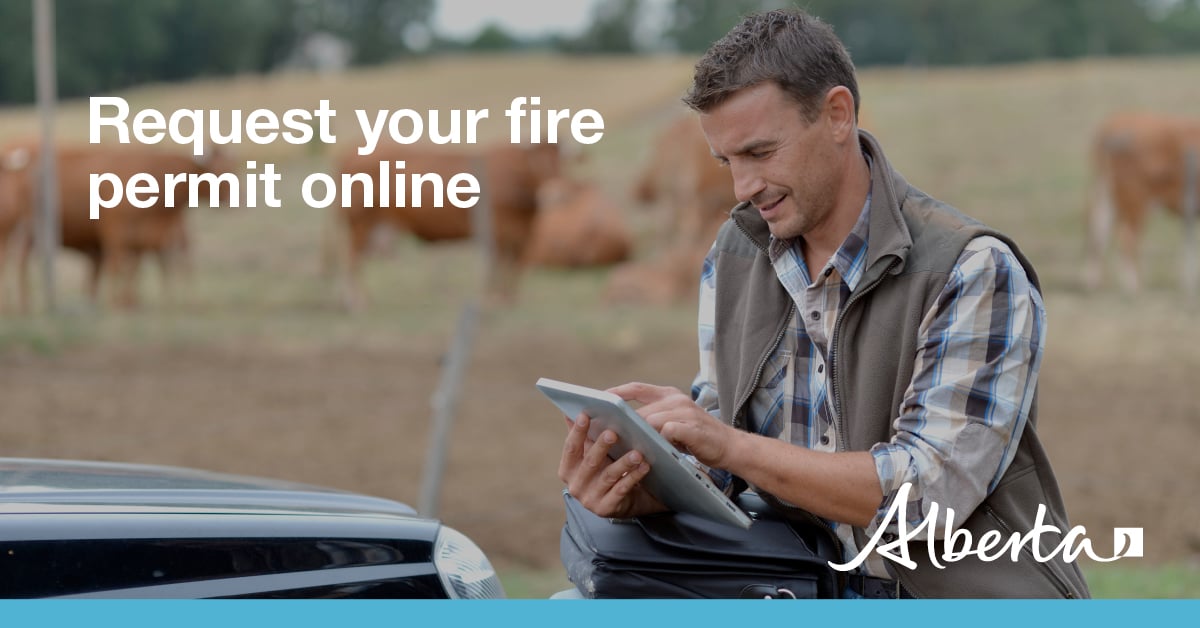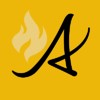
Four of the six wildfires in the Semo Complex are now under control (see full update below).
Never leave your cooking or warming fire unattended, and always ensure you fully extinguish it. Soak the ashes, stir them, and soak them again until they're cool to the touch.
If you see smoke or flame and suspect it's a wildfire, please call 310-FIRE (3473).
See below for information on harvesting and burning permits.
Updates for the High Level Forest Area will now be posted on Mondays, Wednesdays and Fridays, unless conditions change.
This update is best viewed on a web browser or the AB Wildfire Status App | View previous High Level Forest Area Updates. Bold indicates new or important information.
HUNTING OR RECREATING NEAR WILDFIRE AREAS
We urge everyone to use extra caution near burnt areas. There are many hazards that may not be visible, such as deep burning ash pits and falling trees. Burnt trees are a serious hazard, and trees that may look healthy, which have green needles or leaves, could have burnt-out roots under the ground and fall unexpectedly onto you or the road and block your vehicle. Please stay clear of active fire operation areas for the safety of our firefighters, aircraft, and equipment operators.

Firefighters from the Yukon (right) await air transport on the Semo Wildfire Complex (Sept. 13, 2024). With four of the six wildfires now under control (the other two are being held), firefighters continue their steady progress towards controlling all fires in the complex.
IF YOU PLAN TO HARVEST IT, GET YOUR PERMIT
Personal Use Forest Products Permits are for small-scale personal use only (no resale) for Christmas trees, firewood or transplants. These free permits are available online or in person at your nearest forestry office. The PUFPP entitles individuals to:
- Cut up to three Christmas trees under 2.5 m (approximately 8 feet in height and no more than 15 cm in diameter at the stump).
- Transplant up to 20 trees less than 2.5 m in height.
- Cut up to 5 cubic metres (5 m3) of firewood. The number of trees cut depends on tree species and size and is approximately:
- 5 to 7 large coniferous trees (generally trees with needles), or
- 4 to 6 deciduous trees (generally trees with leaves), or
- 5 m3 is approximately 1.5 cords (approximately 3 level 1/2 ton pickup truck boxes). - Cut up to 5 m3 of roundwood timber (fence posts or poles).
PUFPPs authorize Albertans to cut and removed timber from designated Crown land only. The area-specific PUFPP document must be with you at all times while cutting or transporting trees from Crown land. In one 30-day period, a person can hold up to 4 permits – up to one permit each for:
- firewood
- Christmas trees
- roundwood
- transplants
IF YOU PLAN TO BURN IT, GET YOUR PERMIT
Fire permits are now required for any outdoor burning with the exception of campfires.
Fire permits are free and can be requested online. Visit firepermits.alberta.ca to request your fire permit online. You may also request your fire permit by calling your local Forestry Office.
High Level Forest Area | Permit Line - 780-926-5407.
Stay informed of fire restrictions and fire bans in your area by checking Alberta Firebans.
HIGH LEVEL FOREST AREA | WILDFIRE SITUATION
There are currently 19 wildfires burning in the High Level Forest Area. Of these, eight are being held and 11 are classified as under control. There is also one wildfire along the Alberta-N.W.T. border.
Since January 1, 2024, there have been 178 wildfires in the High Level Forest Area, burning a total of 326,158 hectares (ha).
HWF072, which is BEING HELD, is located 45 km west of Zama City and 60 km northwest of Chateh. This wildfire is estimated to be 35,921 ha in size. There are now approximately 80 firefighting personnel, eight helicopters and 10 pieces of heavy equipment assigned to this wildfire. Heavy equipment operators continue working to establish and enhance containment lines around the perimeter, while firefighters and helicopters with buckets work on hotspots. The cause of this wildfire was determined to be lightning.
HTZ001 (bordering on the N.W.T. to the north), which included previous areas of concern to the NE and SE of Bistcho Lake, is classified as BEING HELD and is being monitored closely. Please see NWT Wildfire Update Map and the South Slave SS009-24 Update for more information on the status of this and other fires on the N.W.T. side of the border.
No significant growth has been observed on the above-noted wildfires and none currently threaten communities.
You can view the location and statistics of these wildfires on our interactive map by following the active wildfire link. Visit our website to learn more about wildfire classifications.
HIGH LEVEL FOREST AREA | ACTIVE WILDFIRES OF INTEREST
HCX001 – Semo Complex (HWF053, HWF061, HWF081, HWF083, HWF136, HWF141)
The Semo Wildfire Complex is located west of Garden River, north of Fox Lake and John D'Or Prairie.
There are currently 377 firefighters and support personnel, including 15 helicopters and 74 pieces of heavy equipment, associated to the Semo Wildfire Complex.
HWF061 is approximately 105,871 hectares (ha) and located approximately 8.8 km northeast of the community boundary line of John D'Or Prairie, 10.7 km north of the community boundary line of Fox Lake, 1.7 km north of Highway 58. The wildfire is classified as BEING HELD, which means that this wildfire is not expected to grow beyond established boundaries under the current conditions. The wildfire was determined to be caused by lightning.
For this wildfire (the largest in the complex) to be classified as under control, firefighters must extinguish hotspots along the containment line to prevent the wildfire from spreading further. This process is called mop-up, where deep ash pits and burning roots under trees must be dug up and extinguished with water. This process can take a lot of time and energy, as firefighters often must get down on the ground and feel for with their hands for hotspots.
The reclamation planning process has begun, which will involve returning the topsoil back over the containment lines that were built by heavy equipment and no longer pose a threat from the wildfire. Rolling back the topsoil will allow for new growth and re-generation of vegetation.
WEATHER FORECAST | Today, a high of 17C with 45 per cent relative humidity is expected, with east winds at 15 km/h. Tomorrow, a high of 18C with 40 per cent relative humidity is forecast, with west-northwest winds at 10-15 km/h. Similar weather is expected for the next several days, along with a slight chance of rain on Saturday.

Nodwells (left), which form part of the heavy equipment groups at many wildfires, including the Semo Complex above, are an excellent mode of transportation for both personnel and equipment on challenging terrain (Sept. 8, 2024).
FIRESMART YOUR HOME AND PROPERTY
FireSmart is a national program that helps Canadians increase their resilience to wildfire. Whether you are a homeowner, resident, business, local government, or Indigenous community, you can take small steps with lasting impacts.
Now that fall is quickly approaching, we ask farm and acreage owners to start thinking about FireSmart options for their property. Here are some tips to get you started:
Fields and pastureland | Give yourself, your neighbours, your livestock and firefighters a chance against wildfire by reducing the accumulation of dry grass and stubble. This will help to prevent a fire from escaping your property or from coming in to your yard. Cut the grass! It sounds simple, but well-maintained short grass can be a good fire deterrent. When a swift-moving grass fire hits a mowed patch of grass, it slows the spread of the fire and sometimes the fire will burn itself out. Grain fields located near or next to building sites should be worked up. At the very least, work up a strip next to the building site to act as a fire guard.
Dry stubble in the fields can carry a fire into the yard and with new farming practices of zero or minimal till, the accumulation of fine, dry fuel is increased. Make one or two passes around the yard before putting your tillage equipment away for the winter and you’ll go a long way in reducing the risk from wildfire. If you have hay fields next to the yard, cut them as late in the season as possible to minimize re-growth, or mow a strip next to the building site to act as a fire guard.
Allowing livestock to graze in the fields next to the yard in the fall will also help to reduce the amount of vegetation and potential fire hazard. Dry pastureland presents the same challenges to wildfire as hayfields and grain fields. Tilling around the outside perimeter of pastureland will create a fire break that could save your field from burning, or prevent a fire from spreading to your other fields.

Learn more about reducing wildfire risks on the farm; download the FireSmart Farm and Acreage Guide.
WILDFIRE SAFETY MESSAGES
DANGEROUS TREES | Be extra cautious near burnt areas and avoid forested areas that have been recently affected by wildfire. Hazards remain from deep ash pits, burning peat and falling trees or branches, especially if windy.
SMOKE | Lingering smoke may still be visible in some areas and in affected communities. Smoke inversions can trap air near the ground causing dangerous driving conditions and poor air quality. Please use extra caution when driving in smoky conditions. To see forecasted smoke, please visit FireSmoke.ca. If you have smoke related health concerns, please visit or contact Alberta 811.
ALBERTA HEALTH WILDFIRE RESOURCES | You can visit Alberta Health Services for information on how you or your loved ones can access resources related to wildfire impacts and smoke concerns.
DRONES | The use of recreational drones over wildfires in Alberta is dangerous, illegal and could result in a fine of up to $15,000* for putting aircraft and people at risk. Please give firefighters the space they need to do their jobs safely. *Transport Canada.
WILDFIRE INFORMATION
- Visit firesmoke.ca to view smoke drifts in the area
- Call 811 for smoke-related health concerns
- For evacuation information, please visit https://www.alberta.ca/alberta-emergency-alert.aspx
- Download the Alberta Wildfire app today and get access to accurate, real-time information on wildfires in your area. You can also find information on fire advisories, restrictions and bans across the province and much more all on your mobile device. Available for Apple and Android.
- Before heading out, check the fire bans website or download the app to determine if there are any fire advisories, fire restrictions or fire bans in effect for your destination.
- Subscribe to the High Level Forest Area Update to receive an email when new information is posted. Join the conversation on Facebook, Twitter or Instagram.
- Missed an issue of the High Level Forest area Wildfire Update? You can find previous updates on our website.
- For evacuation orders and alerts in the Province visit Alberta Emergency Alerts or your community webpage for more information.
- For road closure information, visit Alberta 511 or download the app.
- To see all the wildfires burning in Alberta click here.
- Learn how you can prepare yourself for a wildfire with some tips and tricks on wildfire preparedness



